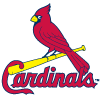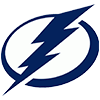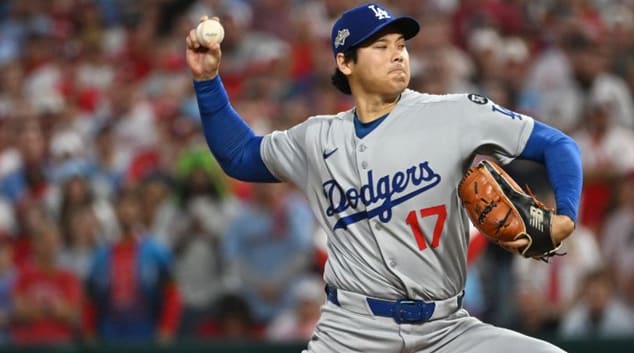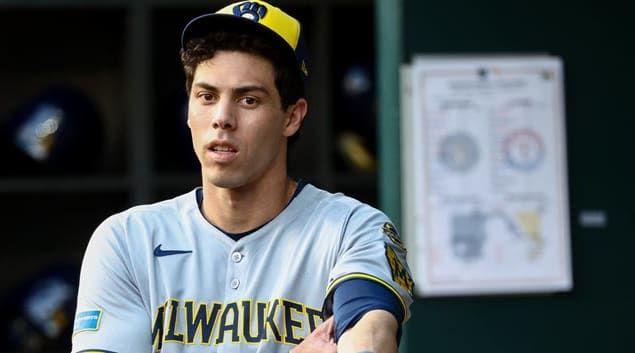-----Original Message-----
From: "Christopher Liss"
Sent: Monday, June 6, 2011 6:10pm
To: "Jeff Erickson"
Subject: Charging
Albert Pujols' recent hot streak - four homers in the last three games - has put him closer to his normal trajectory, the one we've come to expect when we've put him atop our cheat sheets the last few years. While few fantasy analysts downgraded Pujols more than a few spots, there's been a sense that he's merely one of several top first baseman, in the same tier as Joey Votto, Miguel Cabrera and Adrian Gonzalez. Whether that's true is perhaps worth debating, but I'm more interested in the question of why two months of below par results from someone whose baseline has been established over 10 seasons would materially affect his value. Put differently, Pujols' contact rate of 90 percent is actually higher than his career mark (.89), and while his walk rate is down, he's still got more walks than strikeouts. Do the poor results alone mean anything for a player with this kind of track record?
Secondly, I think stats are often misunderstood or at least misapplied in this context. When we look at the macro view - from 30,000 feet - streaks, slumps, clutch hitting, chokes, BABIP peaks and valleys all melt into a general baseline where variance, i.e., luck, exists but ultimately regresses back to it. A player is who he is, no matter what he does this week. But once we get two months worth
-----Original Message-----
From: "Christopher Liss"
Sent: Monday, June 6, 2011 6:10pm
To: "Jeff Erickson"
Subject: Charging
Albert Pujols' recent hot streak - four homers in the last three games - has put him closer to his normal trajectory, the one we've come to expect when we've put him atop our cheat sheets the last few years. While few fantasy analysts downgraded Pujols more than a few spots, there's been a sense that he's merely one of several top first baseman, in the same tier as Joey Votto, Miguel Cabrera and Adrian Gonzalez. Whether that's true is perhaps worth debating, but I'm more interested in the question of why two months of below par results from someone whose baseline has been established over 10 seasons would materially affect his value. Put differently, Pujols' contact rate of 90 percent is actually higher than his career mark (.89), and while his walk rate is down, he's still got more walks than strikeouts. Do the poor results alone mean anything for a player with this kind of track record?
Secondly, I think stats are often misunderstood or at least misapplied in this context. When we look at the macro view - from 30,000 feet - streaks, slumps, clutch hitting, chokes, BABIP peaks and valleys all melt into a general baseline where variance, i.e., luck, exists but ultimately regresses back to it. A player is who he is, no matter what he does this week. But once we get two months worth of data, then a new baseline starts to form (or at least it starts to affect the bigger career one), and we begin to use it as the new level around which streaks and slumps might occur. If Pujols has nine homers through a third of the year, then he's on a pace for 27 homers. If that's the case, then maybe this is the beginning of a decline phase, which, seasoned with bad luck, gives him a season worthy of a fifth or sixth-round pick.
But from the micro view - at the player's level - you'll hear that he's seeing the ball better right now, that he's "locked in," and when he hits four homers in three games, Pujols is on a pace closer to 38 and likely to finish with numbers closer to his career norms. In other words, from the macro view, we backfit the data into our view of who Pujols is, but from the micro level, Pujols might change from a slumping power hitter to a locked-in superstar. This isn't a trivial distinction because the former view puts a lot of emphasis on baseline and how we go about establishing and revising it as more data comes in and projects forward a performance in line with it, while the latter expects vast variations in performance based on which Pujols, the hot or cold one, is at the plate. While the macro view is useful in managing long-term expectations, the micro one much more precisely describes how players accumulate stats on a day to day and week to week basis. According to the macro view, when Pujols has nine homers, you can't expect him to go on a four-homer-in-three-day tear (that would be a 216 homer pace) to get back on track. According to the micro one, that's what Pujols does when he's locked in, and he'll probably have another two-week stretch where his OPS is around .700 when he slumps. As we have no idea when each will happen or how long they will last, it's hard to form a precise expectation for what he'll do the rest of the way. He might make up for his slow start, and he might not. His preseason projected baseline is a good average expectation of what he might do, but he's very likely to be significantly better or worse than it the rest of the way, depending on how "locked in" he is.
I'm not sure what the take away is from this except that we know less than we sometimes think. A player's actual season is probably the ratio of locked-in-ness to slumps (something we don't know) multiplied by his baseline, (something we know with some imprecision for established players like Pujols and something with know with even less precision for players who are growing, declining and/or inexperienced and unestablished.)
Which leads me to my next point. I traded Justin Masterson in AL LABR to Tom Trudeau for Peter Boujos, Edwin Encarnacion and Matt Thornton. The key player in the deal was Bourjos, someone who strikes out way too much, but has a little pop and the ability to steal a base. Whether he makes that trade worthwhile depends in my opinion almost entirely on his ratio of streaks to slumps. If it's positive, I think I won the deal. If it's negative, Bourjos could lose his job. First, what do you think of the trade, and second, is there any way to figure out what player might have a good streak to slump ratio? Is that even a framework worth considering, or should we just stick with the macro level of baseline only (with appropriate retrofitting for new data)?
-----Original Message-----
From: [email protected]
Sent: Tuesday, June 7, 2011 8:41pm
To: "Christopher Liss"
Subject: RE: Charging
I can't think of any good way to measure projected level of streaks to slumps. I get where you're going with this, but what makes us any better at observing, let alone predicting, that ratio any better than doing the macro analysis that we already do? I suppose you could do it with specific players, with lots and lots observation (i.e., scouting) if you have a trained eye. I don't necessarily mean going to Scout School and go watch games with a radar gun or video camera, though that wouldn't hurt. But I don't think that a statistical analysis is going to help us here in the pursuit that you suggest.
Turning to your initial foray regarding Albert Pujols, I think it's a natural inclination for those of us in the business of ranking players and for those consuming those rankings to want to be able to do something, anything with the stats that we're getting. Two months versus 10 years obviously shouldn't move the needle in and of itself. But we also don't want to be left behind if there actually is a material change. So then we try to look to see why there's been a change, or why there isn't a change, before we've actually confirmed that there is really a change. And that leads to all sorts of analytical fun.
I was introduced to the concept of Fundamental Attribution Errors in a Logic class in college, but it's often taught in Psychology courses as well. The idea, applied here, is that a player is doing something because of a personality trait or issue, rather than because of a physical reason. It's how we try to fill the gaps on why Pujols is slumping, or why another player is streaking. How many times have we heard that Pujols is pressing because of his contract situation? Or conversely, how many times has someone dismissed a player's breakout season because "it's a contract year." Which is it guys? How are you blessed with an innate ability to discern who does better in contract years and who does worse, merely because that player has a contract year? Another example I just heard tonight while watching the Yankees and Red Sox is that David Ortiz is doing well "... because the pressure is no longer on him ..." thanks to the trade for Adrian Gonzalez. This sort of error happens all the time in sports.
Part of that is because we're dealing with imperfect information - we don't know why a player is doing what he is doing, but we want to try to fill in the gaps. "I don't know" rarely satisfies anyone asking the question, but isn't that the correct answer more often than not? It's absurd to claim that you know what's going through a particular player's head, or that one particular factor will have a blanket effect on all players. Tying this back to your original premise, I prefer the 30,000 feet macro-approach that you suggest, especially when it's dealing with established players, even after a two-month sample.
Addressing your trade, I thought you did very well, especially for a 12-team AL-only league. Bourjos is the key to the deal, and yes, there's some risk of him losing his job. His defense will help him longer than others that might slump to the same extent at the plate, though. The Angels, especially in the person of Mike Scioscia, have vigorously resisted the idea of calling up Mike Trout in the near future, and he's really the only one that has a chance to displace Bourjos within the organization. Encarnacion is a classic Liss depressed stock buy - yeah, Brett Lawrie looms, and Encarnacion could easily get benched or even DFA'd, but if it's the latter, I wouldn't be surprised to see him get another chance elsewhere. So at least you're getting at-bats from a player that hit 21 homers last year - it's not too hard to see the upside. And Thornton had a 2.89 ERA in May (albeit with a high WHIP), so not all is necessarily lost there. So there's plenty of different ways you win that trade. And while I like Masterson, he's not exactly risk-free in his own right. I might hesitate to do this deal in a 12-team mixer - ok, who am I kidding, neither Encarnacion nor Thornton would be owned in that format - but even then Bourjos for Masterson is reasonable.
Let me ask you your own question - does your baseline shift on someone like Pujols after two months? How about four months? When does it shift for you? Are you or have you been planning to use an approach of slump-to-streak ratio? And how do you intend to go about it? Because I've got nothing there.
-----Original Message-----
From: "Christopher Liss"
Sent: Wednesday, June 8, 2011 3:05am
To: [email protected]
Subject: Re: Charging
I don't know how to predict streaks and slumps in any scientific way, though I often have hunches that a player is going to go off or cool down for whatever reason, and I'll sometimes make moves on that basis. I haven't tracked how well I've done in those cases, though, so it's not something on which anyone should be willing to rely. But my bigger point is that macro expected return view is usually wrong, and the steak/slump view is usually right. What I mean is that few players hew closely to their exact projections because they don't streak and slump in equal proportions around their baselines. Instead their ratios are unbalanced, and the projections usually are wrong by a fair amount.
But because we don't know how to predict streak/slump, we rely on expected return, often to our detriment. Because in a 14-team league if you have seven expected-return experts relying on preseason macro data, they're going to be slow as glaciers to move, at which point probably three of the seven streak-slump guys will have exceeded expected value. The expected return players might have a better average outcome, but maybe the streak-slump player (with appropriate expert restraint) might have a better chance of winning the league. And If one is better than average at sensing streaks or slumps, he'll have an even bigger advantage. Maybe that's why Pianowski keeps doing so well in the YF&F, a league mostly of long-term-buy-and-holders. He's willing to bet on streaking players and cut slumping ones.
As for the Attribution Errors, that's often true, but I don't think it applies to "locked in" and "in a slump." Those are descriptions of hitters over certain spans (not inane attempts at attributing a cause), and if you've ever played any sport - softball, hoops, tennis, whatever - you know when you're feeling in a grove or in a funk, whether you're seeing things clearly, or lack confidence in your game. From the 30,000 foot perspective, that has no meaning because your grooves and funks are just variance around your baselines. But that's a fiction both from an experiential perspective and also from a predictive one. If your groove lasts a while, the macro view will just incorporate it and give you a new baseline. Same with your slump. It can't possibly be wrong because it's always backward looking - taking what you've done and backfitting it.
As for Pujols, I might have put Ryan Braun and Jose Bautista ahead of him (and I still might due to extra steals for the former and 3B eligibility and clear improvement for the latter), but I don't think anything significant has likely changed with him. It would probably take at least a full season for me to move the needle on Pujols if he maintained the current contact rate and hit massive home runs like he did on Sunday. I expect streaks and slumps out of everyone, and while streaks don't always make up for slumps, at least you're not looking too hard for a new baseline anytime a player is cold.
Finally, I think it's a fine line between trying to "time the market" (which experts say you shouldn't do) and figuring out when a player's baseline is moving from his initial projection before there's enough data to say that with any reliability. Maybe I'm riding Jose Bautista's hot streak, and then suddenly I've caught a breakout. You can watch on TV, or you can be a "tape reader," i.e., look just at the results, but either way, I'm convinced you're sometimes going to have to make a call before the view from 30,000 feet has a chance to come into focus.
-----Original Message-----
From: [email protected]
Sent: Wednesday, June 8, 2011 9:16pm
To: "Christopher Liss"
Subject: RE: Charging
In that respect I think you're right. If you're willing to take a chance on buying into a streaker or against a slumper, there's a higher payoff than the macro guy that waits out the long run. That's especially true in a daily moves league format, and in a mixed league, where there's more in the way of actionable alternatives out there. My track record in F&F speaks to the downside of the 30,000 feet view, and Pianowski's positive record speaks to the upside.
That leads to one more conclusion. We're always going to make mistakes. But we're also pretty good at player evaluation, even if we can't always articulate why we feel a certain way on a player. It makes sense then to make more of these calls. Take more chances on these guys that are streaking that it's a breakout, if there's any sort of inkling that there's good cause for it. Yeah, we'll be wrong sometimes, but if we're right more than we're wrong, and if there's a bigger profit in being right than in holding tight, then it makes sense to make more of these calls. More free agent pickups and more trades are the call. We talked about the trading market a lot last week, and I think one of the big inhibiters of trades occurring is the fear from one side that they might be wrong. But if you believe in your player evaluation skills, you should be making more of these moves and be the one more willing to initiate those deals. It might not address the science in timing streakers, but if you're right more, then you'll profit in the end.

























